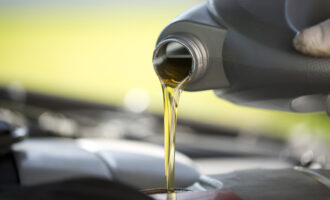
Next heavy-duty engine oil category development could start by 2021
The latest American Petroleum Institute (API) heavy-duty engine oil categories, API CK-4 and API FA-4, were rolled out in December 2016. While the uptake of API CK-4 has been relatively strong, API has forecast a broader adoption of API FA-4 alongside the growth of next-generation vehicles. Despite the declaration that API FA-4 will become more relevant from MY 2021, it seems attention has already shifted to what’s next.
Speaking at the Diesel Engine Oil Advisory Panel (DEOAP) meeting in Atlanta, Georgia, U.S.A., on 11 December 2018, former Truck and Engine Manufacturers Association (EMA) representative Roger Gault said that the development of a new heavy-duty engine oil category could commence as early as 2021. The new category would deliver the necessary standards to tackle anticipated advancements in engine technology in the North American market. The working title for the new heavy-duty engine oil category is PC-12, with API aiming to adopt PC-12 by 2027, following a likely five-year development programme and one-year licensing period.
With headquarters in Chicago, Illinois, U.S.A., EMA is a not-for-profit association that represents worldwide manufacturers of internal combustion engines (ICE) and on-highway medium and heavy-duty trucks. The organisation’s 28 members include prominent automotive brands such as Caterpillar, Cummins, Ford, General Motors, Isuzu, Volvo and more.

Gault suggests there is “no crystal ball on emerging technology.” EMA expects evolutionary changes may occur by MY 2027 off the back of the U.S. EPA Phase 2 Greenhouse Gas Emission Regulations, which may generate new engine lubricant performance demands.
The Greenhouse Gas Emissions and Fuel Efficiency Standards for Medium- and Heavy-Duty Engines and Vehicles – Phase 2 Final Rule will promote a new generation of “cleaner, more fuel-efficient trucks by encouraging the development and deployment of new and advanced cost-effective technologies,” according to the United States Environmental Protection Agency (EPA). Semi-trucks, large pickup trucks, vans, buses and work trucks are covered from model years 2021-2027, whereas for certain trailers the legislation encompasses a slightly broader range of model years (MY 2018-2027).
During his presentation, Gault cited a variety of on-highway regulatory influences that may affect the future of engine technology.
California “is in a different phase,” he says, with continuing discussion around regulatory concepts. The California Air Resources Board (CARB) is the clean air agency in the government of California with stated goals of protecting the public from exposure to toxic air contaminants and maintaining healthy air quality. In the U.S., the EPA sets and manages emissions standards. However, the golden state has received special dispensation to set its own stricter emissions standards. It is the only state in the U.S. that has received this exemption, though other states can choose to follow CARB or federal standards.
CARB regulatory concepts outlined by Gault included extended emission warranty requirements, ultra-low NOx emissions limits, increasing full useful life, and additional low exhaust temperature emission control test requirements. The extended emission warranty will result in increased scrutiny of engine lubricant selection and maintenance practices, says Gault, while changes to Nox emission levels will necessitate further evaluation of engine lubricant influence on aftertreatment capabilities. Gault highlights further emission compliance obligations associated with increasing full useful life, including additional evaluation of engine lubricant influence on aftertreatment degradation.

API has been setting engine oil performance standards for more than 70 years and licensing oils against these standards for over three decades. API’s Lubricant Standards Group is responsible for oversight of all matters relating to engine oils, including the Engine Oil Licensing and Certification System (EOLCS), Motor Oil Matters (MOM) Program, and the development of new and maintenance of current engine oil performance standards and Aftermarket Audit Program.
Protracted timeframes of specification development have left several calling for improvements in the efficiency and effectiveness of the standard setting processes. The API Lubricant Standards Development Review Group is currently undergoing an evaluation of Engine Oil Standard-Setting Processes. The review is considering the current API engine oil standards development process, ASTM and ACEA processes, engine test development and funding. There is a high likelihood that API may begin implementing the new process as part of the development of the new heavy-duty category PC-12.
During his presentation, Gault outlined various technology changes that may drive the development of the new PC-12 category, though he quickly acknowledged these were his preliminary thoughts, not an official EMA position.
Technology changes Gault foresees include a tightening of chemical limits and continuing interest in the lower viscosity grades already under exploration in various parts of the world. We may see increasing engine lubricant temperatures, suggests Gault, requiring improved oxidation protection and wear reduction. The EMA representative also highlighted the importance of heightened focus on staying “in grade” over longer drain intervals with elevated lubricant temperatures.







